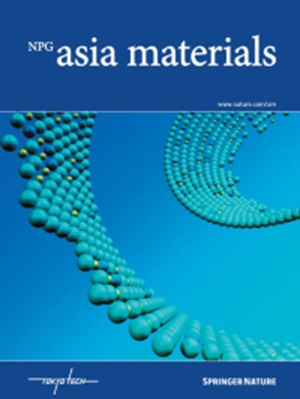全固态电池中渗透驱动的多晶阴极性能提升
IF 8.3
2区 材料科学
Q1 MATERIALS SCIENCE, MULTIDISCIPLINARY
引用次数: 0
摘要
选用合适的正极材料的全固态电池(assb)比传统锂离子电池(LIBs)具有更高的能量密度和更好的安全性。富镍层状阴极具有高能量密度,是传统lib的基准材料。最近的研究强调了在assb中使用无裂纹单晶阴极材料的优点。在本研究中,采用可扩展渗透片式工艺制备了不同阴极材料形态的assb复合电极。通常,无裂纹单晶材料比多晶阴极材料表现出更好的保留性能和更低的速率能力(即,在充放电过程中更慢的动力学)。li6ps5cl浸润多晶电极表现出优异的保留性能和速率性能。恒流间歇滴定技术分析和透射电镜分析证实了单晶电极的严重极化和阴极颗粒中存在岩盐结构层;这些结果表明在材料的层状结构中存在副反应。而多晶阴极材料与固态电解质Li6PS5Cl相渗透的复合电极,由于电极-电解质界面接触密切,表现出优异的电化学性能。本研究结果证实了界面工程和材料形态对assb整体性能和稳定性的重要影响,为未来高性能assb的发展提供了基础。本研究介绍了一种在全固态电池中利用传统锂离子电池电极的技术。通过将固体电解质溶液渗透到多孔电极中,研究了活性物质形态对电极性能的影响。在多晶材料中,观察到高覆盖率和薄侧反应层的形成。因此,渗透过程也证实了多晶材料的优越性能。本文章由计算机程序翻译,如有差异,请以英文原文为准。

Infiltration-driven performance enhancement of poly-crystalline cathodes in all-solid-state batteries
All-solid-state batteries (ASSBs) with adequately selected cathode materials exhibit a higher energy density and better safety than conventional lithium-ion batteries (LIBs). Ni-rich layered cathodes are benchmark materials for traditional LIBs owing to their high energy density. Recent studies have highlighted the advantages of using crack-free, single-crystalline cathode materials in ASSBs. In this study, a scalable infiltration sheet-type process was used to fabricate composite electrodes with different cathode-material morphologies for ASSBs. Typically, crack-free single-crystalline materials exhibit better retention performance and lower rate capability (i.e., slower kinetics in charge‒discharge processes) than polycrystalline cathode materials. Li6PS5Cl-infiltrated polycrystalline electrodes showed excellent retention performance and rate capability. Galvanostatic intermittent titration technique analysis and transmission electron microscopy of the single-crystalline electrode confirmed severe polarization and the presence of a rock-salt-structure layer in the cathode particles; these results indicated side reactions within the layered structure of the material. In contrast, composite electrodes consisting of polycrystalline cathode materials infiltrated with the solid electrolyte Li6PS5Cl showed excellent electrochemical performance owing to intimate electrode–electrolyte interfacial contact. The result from this study confirmed the critical influence of interface engineering and material morphology on the overall performance and stability of ASSBs and could facilitate the development of high-performance ASSBs in the future. This study introduces a technique for utilizing conventional lithium-ion battery electrodes in all-solid-state batteries. By infiltrating a solid electrolyte solution into the porous electrode, the effects based on the morphology of the active material were investigated. In poly-crystalline materials, high coverage and the formation of a thin side reaction layer were observed. Consequently, the infiltration process also confirmed the superior performance of poly-crystalline materials.
求助全文
通过发布文献求助,成功后即可免费获取论文全文。
去求助
来源期刊

Npg Asia Materials
MATERIALS SCIENCE, MULTIDISCIPLINARY-
CiteScore
15.40
自引率
1.00%
发文量
87
审稿时长
2 months
期刊介绍:
NPG Asia Materials is an open access, international journal that publishes peer-reviewed review and primary research articles in the field of materials sciences. The journal has a global outlook and reach, with a base in the Asia-Pacific region to reflect the significant and growing output of materials research from this area. The target audience for NPG Asia Materials is scientists and researchers involved in materials research, covering a wide range of disciplines including physical and chemical sciences, biotechnology, and nanotechnology. The journal particularly welcomes high-quality articles from rapidly advancing areas that bridge the gap between materials science and engineering, as well as the classical disciplines of physics, chemistry, and biology. NPG Asia Materials is abstracted/indexed in Journal Citation Reports/Science Edition Web of Knowledge, Google Scholar, Chemical Abstract Services, Scopus, Ulrichsweb (ProQuest), and Scirus.
 求助内容:
求助内容: 应助结果提醒方式:
应助结果提醒方式:


